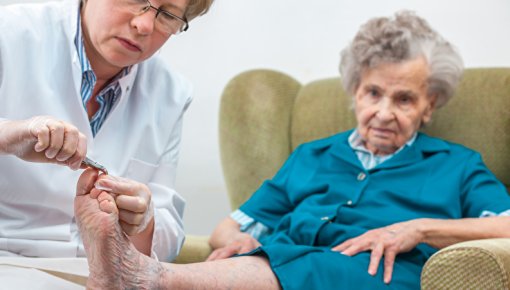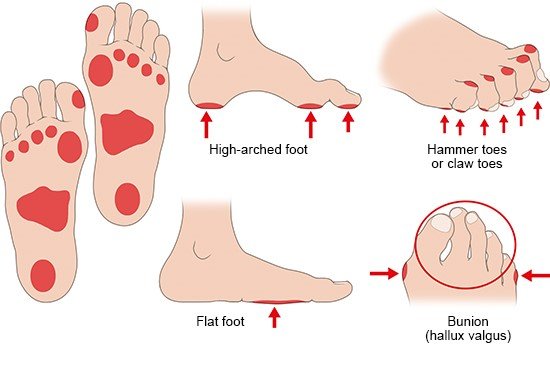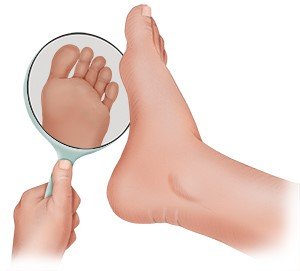Bundesärztekammer (BÄK), Kassenärztliche Bundesvereinigung (KBV), Arbeitsgemeinschaft der Wissenschaftlichen Medizinischen Fachgesellschaften (AWMF). Nationale Versorgungsleitlinie: Therapie des Typ-2-Diabetes. S3-Leitlinie. AWMF-Registernr.: nvl-001g. 2023.
Coffey L, Mahon C, Gallagher P. Perceptions and experiences of diabetic foot ulceration and foot care in people with diabetes: A qualitative meta-synthesis. Int Wound J 2019; 16(1): 183-210.
Elraiyah T, Prutsky G, Domecq JP et al. A systematic review and meta-analysis of off-loading methods for diabetic foot ulcers. J Vasc Surg 2016; 63(2 Suppl): 59S-68S.
Gale L, Vedhara K, Searle A et al. Patients' perspectives on foot complications in type 2 diabetes: a qualitative study. Br J Gen Pract 2008; 58(553): 555-563.
Hoogeveen RC, Dorresteijn JA, Kriegsman DM et al. Complex interventions for preventing diabetic foot ulceration. Cochrane Database Syst Rev 2015; (8): CD007610.
Matricciani L, Jones S. Who cares about foot care? Barriers and enablers of foot self-care practices among non-institutionalized older adults diagnosed with diabetes: an integrative review. Diabetes Educ 2015; 41(1): 106-117.
Morbach S, Lobmann R, Eckhard M et al. Diabetic Foot Syndrome. Exp Clin Endocrinol Diabetes 2021; 129(S01): S82-S90.
The International Working Group on the Diabetic Foot. IWGDF Guidelines on the prevention and management of diabetic foot disease. 2019.
Van Netten JJ, Raspovic A, Lavery LA et al. Prevention of foot ulcers in the at-risk patient with diabetes: a systematic review. Diabetes Metab Res Rev 2020; 36 Suppl 1: e3270.
Van Netten JJ, Sacco IC, Lavery LA et al. Treatment of modifiable risk factors for foot ulceration in persons with diabetes: a systematic review. Diabetes Metab Res Rev 2020; 36 Suppl 1: e3271.
IQWiG health information is written with the aim of helping people understand the advantages and disadvantages of the main treatment options and health care services.
Because IQWiG is a German institute, some of the information provided here is specific to the German health care system. The suitability of any of the described options in an individual case can be determined by talking to a doctor. informedhealth.org can provide support for talks with doctors and other medical professionals, but cannot replace them. We do not offer individual consultations.
Our information is based on the results of good-quality studies. It is written by a team of health care professionals, scientists and editors, and reviewed by external experts. You can find a detailed description of how our health information is produced and updated in our methods.



